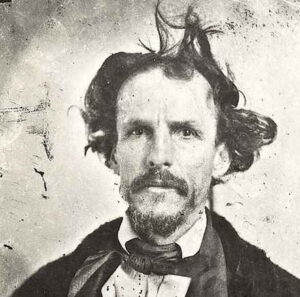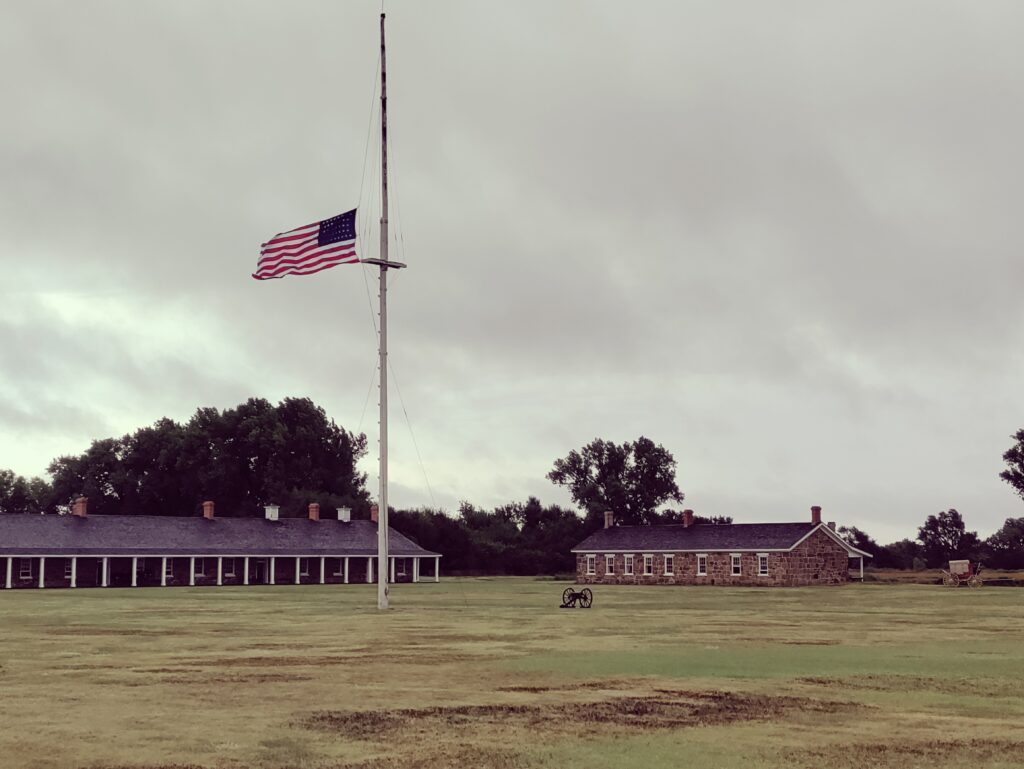

Fort Larned
This week we continue our journey through West Central Kansas with a stop at Fort Larned, which is located near Larned, Kansas, approximately 270 miles from the western edge of Kansas City. The camp created in 1859 was originally named “Camp on Pawnee Fork”. The name was soon changed to “Camp Alert” by the resident soldiers because they had to remain constantly alert for Indians while in the camp. In 1860, the camp was moved 3 miles upstream and renamed Fort Larned, after Colonel Benjamin F. Larned, the paymaster general of the U.S. Army at the time.
The purpose of the camp from the beginning was to protect mail, supplies, and passengers traveling on the Sante Fe trail. This protection was needed due to increased Indian attacks on these wagon trains. The Indians were unhappy with the increased travel on the Sante Fe trail which created disruptions in the Buffalo migration patterns which were critical to the Central Plains Indians’ way of life.
I was lucky to be at Fort Larned when a television show on historic cooking was filming and there were several re-enactors on-site to participate in the show. I was told that the fort often has special events where re-enactors are present, I would recommend checking their website for those dates if that is something that interests you.
I’m a history nerd and I spent a couple of hours just talking to the incredibly knowledgeable volunteers. I was also there on a cold and rainy day at the end of August. As I walked around the fort with my shoulders hunched against the strong wind that howled across the parade ground of the fort, I wondered what that wind must have felt like in the winter to soldiers living in tents and dugouts in the first year of the fort. Hard to imagine the hardships they must have endured.
The beginning of the Civil War in 1861 brought increased activity by the Central Plains Indians which continued for many years. In 1867, General Winfield Scott Hancock brought a large force to Fort Larned wanting to impress the Indians with his power. The Indians were not impressed and after the meeting, Hancock and a young officer named George Armstrong Custer rode in a Cheyenne and Lakota camp and burned it to the ground inciting what would become known as “Hancock’s War”. In the winter of 1869, the Army fought against the Cheyenne, Kiowa, and Comanche tribes. By end of that winter, most of the Great Plains Indians around Fort Larned had been forced onto reservations.
As railroads moved west and traffic on the Sante Fe Trail was reduced, the fort was eventually no longer needed and it was closed in 1878. The site served as a private ranch from 1885-1957 at which time it was named as a National Historic Site and taken into the National Parks system. Fort Larned is said to be one of the best remaining examples of a fort used during the Indian Wars. The site has 10 original buildings, each of which is set up to look as it would have during the time it was in use. There is also an excellent museum in the visitors’ center that is worth a visit before going through the other buildings.
Fort Larned is one of the best Historic Forts I have seen, and I highly recommend it if you happen to be in the area.



